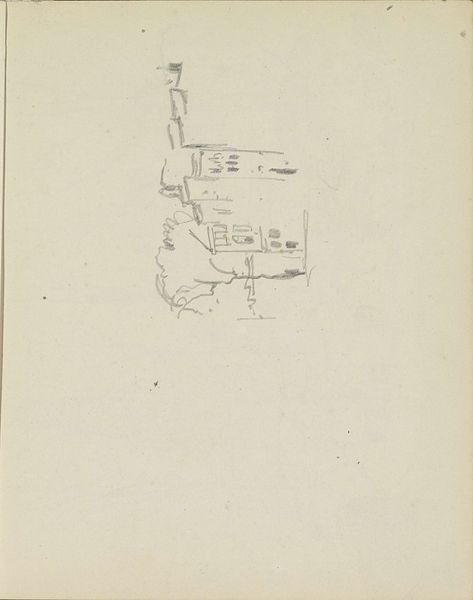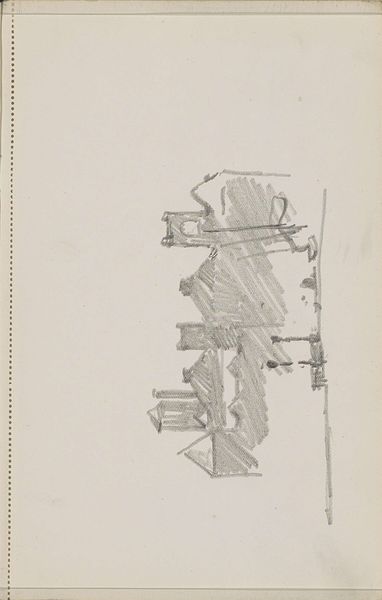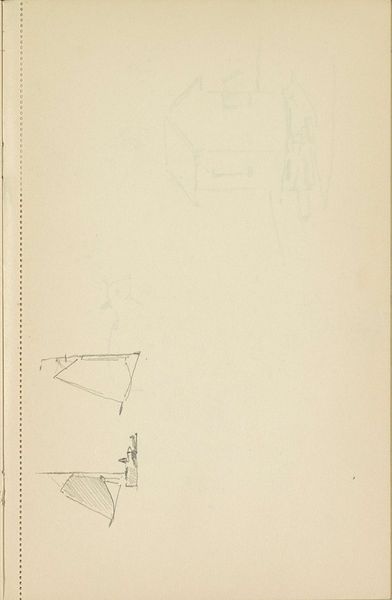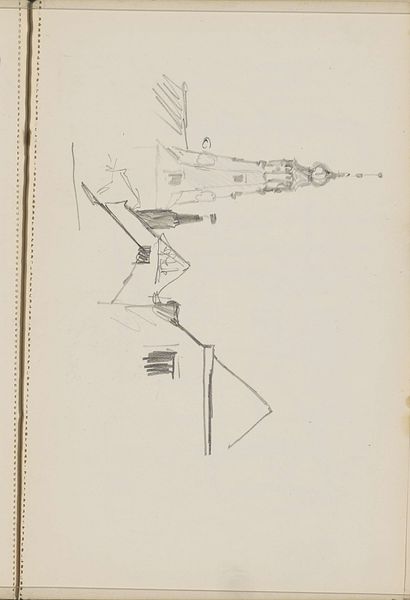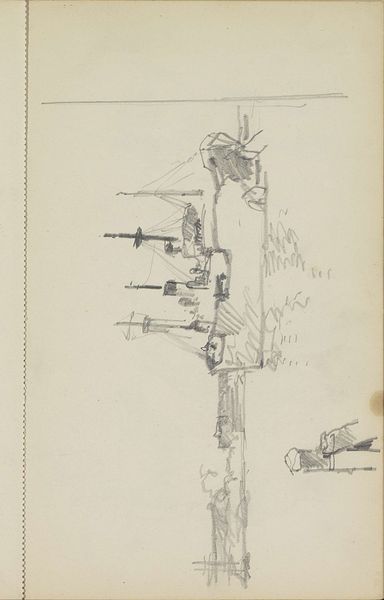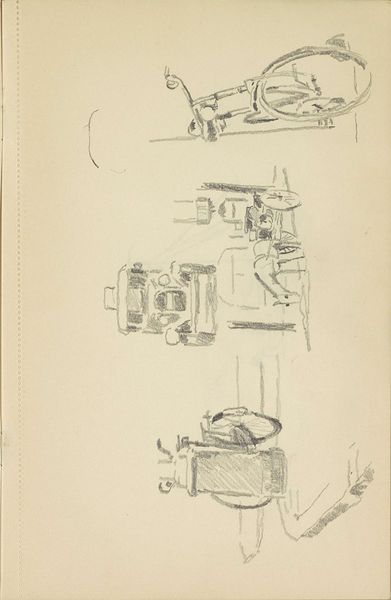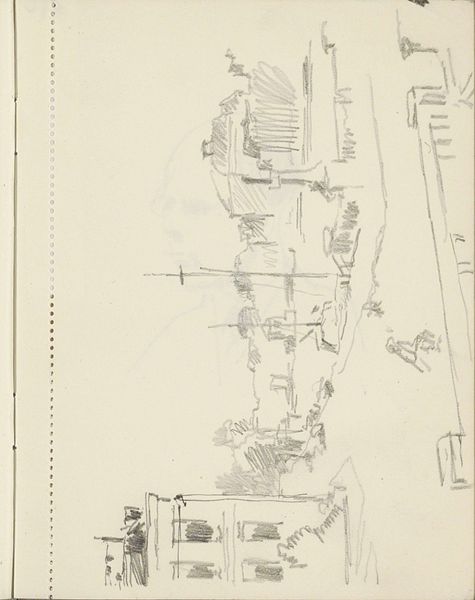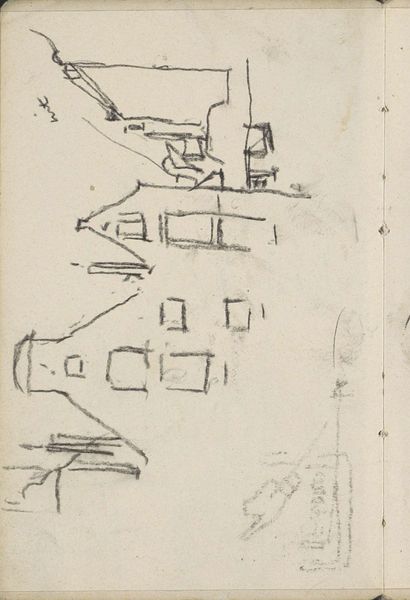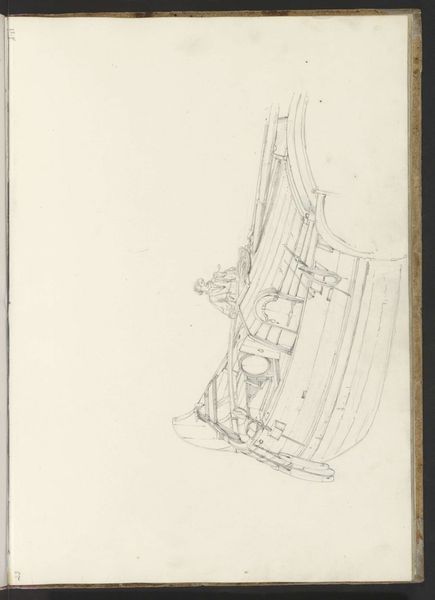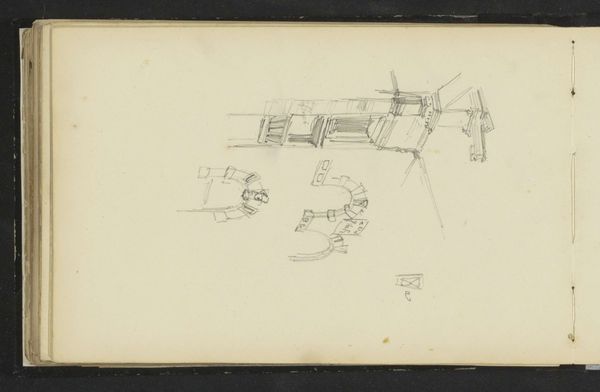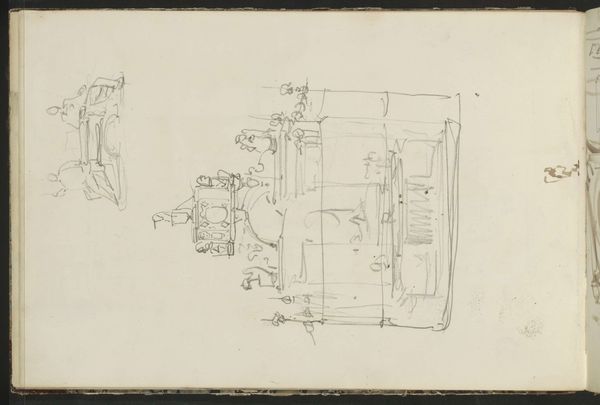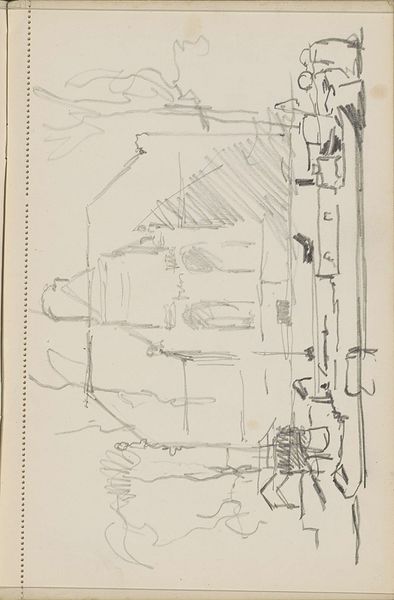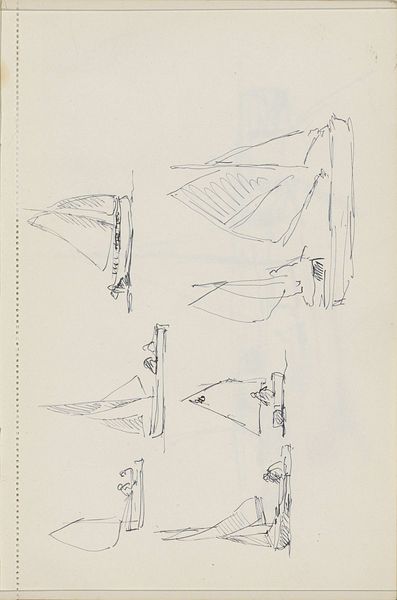
drawing, pencil
#
drawing
#
amateur sketch
#
quirky sketch
#
landscape
#
personal sketchbook
#
idea generation sketch
#
sketchwork
#
geometric
#
detailed observational sketch
#
pencil
#
sketchbook drawing
#
cityscape
#
storyboard and sketchbook work
#
sketchbook art
#
initial sketch
Copyright: Rijks Museum: Open Domain
Curator: Here we have "Torenspitsen, een koepeltoren en een staande man" or "Spires, a domed tower, and a standing man," a pencil drawing by Cornelis Vreedenburgh, likely created sometime between 1890 and 1946. Editor: It’s rather stark, isn't it? The pencil work creates this sense of immediacy, a quick capturing of forms. The spires lean, and everything feels a bit off-kilter. Curator: Exactly. This was very likely a page from a sketchbook. We see that informality in many rapid preparatory drawings of this era, but there is also the role of urban expansion in the Netherlands influencing a whole school of artists' sketching practices. The quick and unrefined method became synonymous with capturing ephemeral scenes from a city rapidly being redeveloped. Editor: I notice the recurring geometric motifs. See how Vreedenburgh abstracts architectural elements into simple shapes. The lines are efficient; they define volumes economically, especially that domed tower. It's more about the essence of the form than photorealistic depiction. Curator: That’s precisely the function of a sketch! An interesting element here is that juxtaposition of the architectural sketches above with the figure study below. We often find, during this period, social realist ideals creeping into the depictions of figures occupying urban space. The artist presents them as anonymous but ubiquitous figures amidst these grand developments. Editor: It's fascinating how those spires and domes, mere suggestions of architectural grandeur, seem to dwarf the figure. What do you think, then, is Vreedenburgh trying to tell us with this hierarchy? Curator: It’s an articulation of modernity's grip on daily life! This might illustrate the smallness of the individual, dwarfed by the modern city but nonetheless participating and shaping a sense of everydayness, amid all the building. Editor: It strikes me, looking at this now, that despite its casual nature, the sketch possesses a sort of monumental quality, stemming from this exact interplay of human figure versus structure. Curator: Agreed. Sketches like these offer invaluable insights into not just the artistic process, but also into how artists in this period conceived of their relationship with the modernizing world. Editor: Yes. A quick little sketch, but heavy with information. I'll certainly view other architectural drawings of the time with a wider lens from now on.
Comments
No comments
Be the first to comment and join the conversation on the ultimate creative platform.
